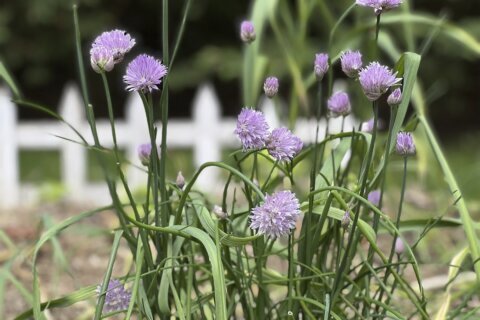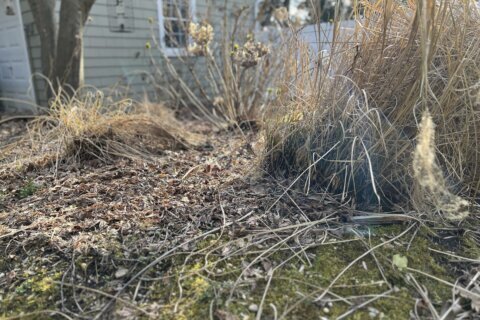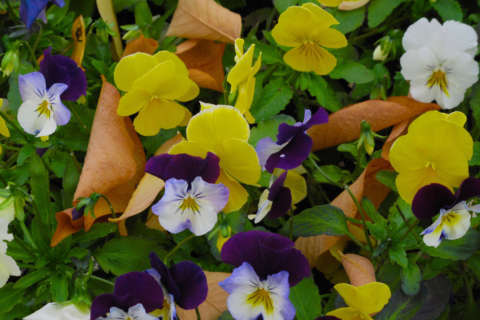It’s no secret that the key to healthy plants is healthy soil, and the best way to improve soil is by incorporating compost, which can take up to a year to make.
Bokashi is a composting method that can speed that up. It uses an inoculant developed in Japan in the 1980s containing beneficial microorganisms.
Compost improves the drainage of heavy clay soil and enhances the water retention of sand. It exudes nutrients and microbes to nourish plants and increase their vigor, while decreasing or eliminating the need for conventional fertilizer.
Homemade compost, always a worthwhile endeavor, requires time and patience. Ingredients must be tossed or turned periodically to expose all parts to the oxygen necessary for their aerobic – or oxygen-fueled — decomposition.
Bokashi composting degrades ingredients anaerobically, replacing the function of oxygen with fermentation, which essentially pickles them. This cuts the wait time to as little as 10 days, and creates a product that’s even higher in nutrients than traditional compost.
It can be done in a small, indoor space, and the only equipment needed is a 5-gallon bucket with a spout and tight-fitting lid, and a bag of inoculant to kick start the fermentation process. Bokashi inoculants typically contain wheat bran, wheat germ or sawdust. You can buy a kit or research DIY options to get started.
Add kitchen scraps to the bucket in 2-inch layers, sprinkling a small handful of inoculant over each layer as you go and resealing the bucket tightly between additions. You might cover the layers with a plate or plastic wrap before sealing the container to further reduce oxygen exposure.
When the bucket is full, drain the produced liquid from the spout every couple of days. Dilute one teaspoon of that “compost tea” into a quart of water and apply the highly nutritious solution to garden or houseplant soil to increase plant vigor and yield. Avoid direct contact with foliage, and use each batch within a day or so of collecting it.
Meat and dairy scraps — strictly no-no’s in a regular compost pile — can be incorporated into the bokashi bucket. Unlike conventional compost piles, which don’t heat up sufficiently to kill harmful bacteria and parasites, the effective microorganisms in the bokashi bucket will destroy any pathogens present in the animal products.
Ingredients should be added quickly and sporadically to avoid introducing too much oxygen to the bucket. Likewise, you should avoid the temptation to check on its progress between additions.
The sealed bucket should not emit any odors into the room, but you may notice a sweet-and-sour scent when the lid is opened. This is normal. A foul odor, however, signals that something has gone awry. If you detect a rotting-egg odor or if dark mold is visible within the bucket (white mold is OK), try adding more inoculant. If the situation isn’t remedied within a couple of days, discard the batch, clean and disinfect the bucket and start over.
When the fermentation process is complete — again, in as little as 10 days — the resulting biomass will still resemble the original ingredients, but will decompose quickly. It can be buried in trenches in a new garden bed at least two weeks before planting. Be sure to cover it completely with soil.
You can also add it to the center of a traditional or worm composting bin or pile (mixed well with the existing contents), where it will break down further.
If the notion of creating “pre-compost” only to add it to a conventional compost pile seems pointless, consider that incorporating bokashi-decomposed ingredients will save many months, essentially providing a fast track to finished compost.
If you don’t have a conventional compost pile, you can finish your bokashi compost by digging a hole and burying batches in a dedicated spot in the garden. After two weeks, you can dig up what you need and use it as you would regular compost.
Another option: Bokashi can be dug into trenches alongside but safely away from plants. Take care to avoid direct contact with roots, as the acidity of the fermented product will burn them. For the same reason, it should not be applied as a top dressing or used as mulch unless it has been further composted using traditional methods.
——
Jessica Damiano writes regular gardening columns for The Associated Press. She publishes the award-winning Weekly Dirt Newsletter. Sign up here for weekly gardening tips and advice.
For more AP gardening stories, go to https://apnews.com/hub/gardening.
Copyright © 2024 The Associated Press. All rights reserved. This material may not be published, broadcast, written or redistributed.







